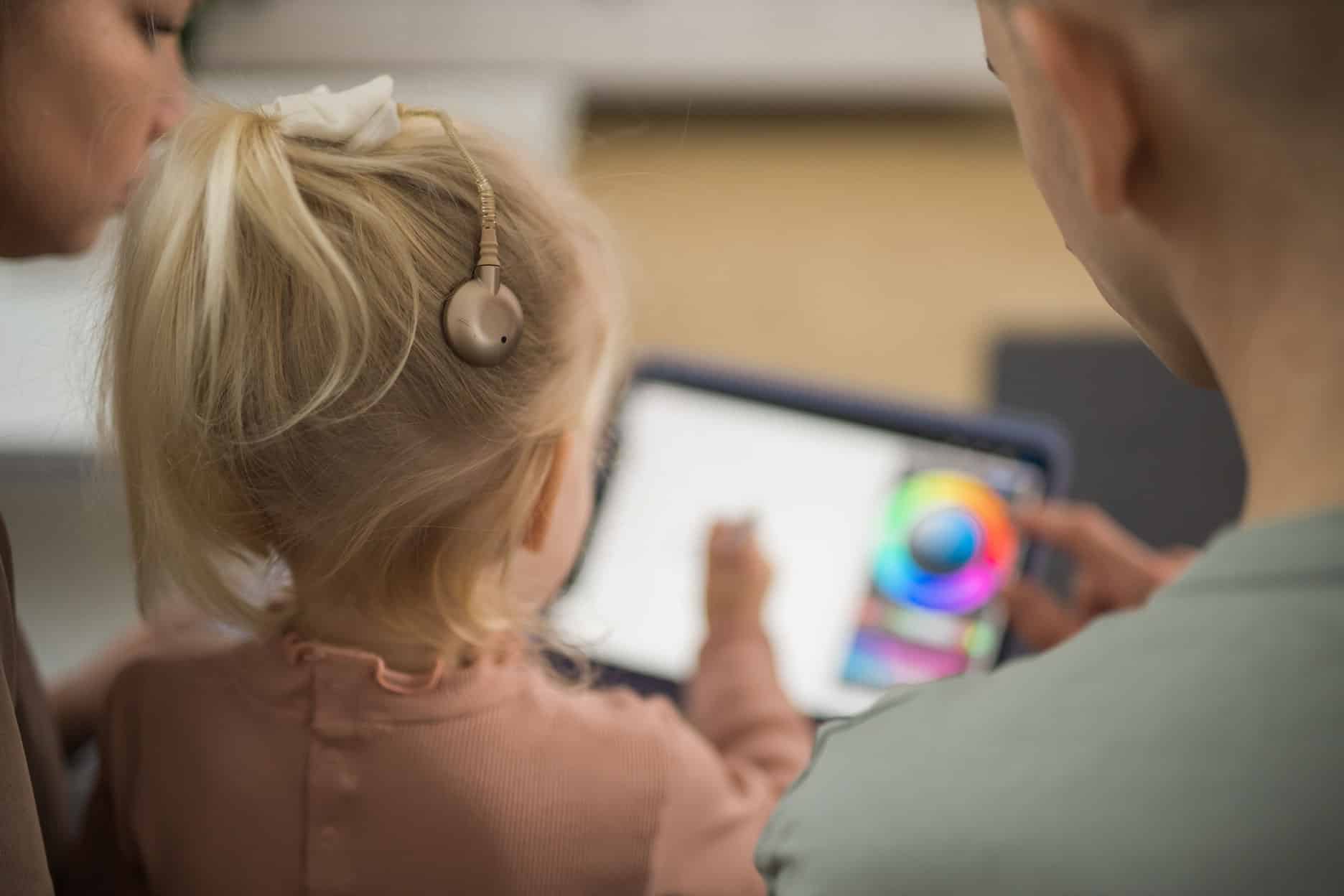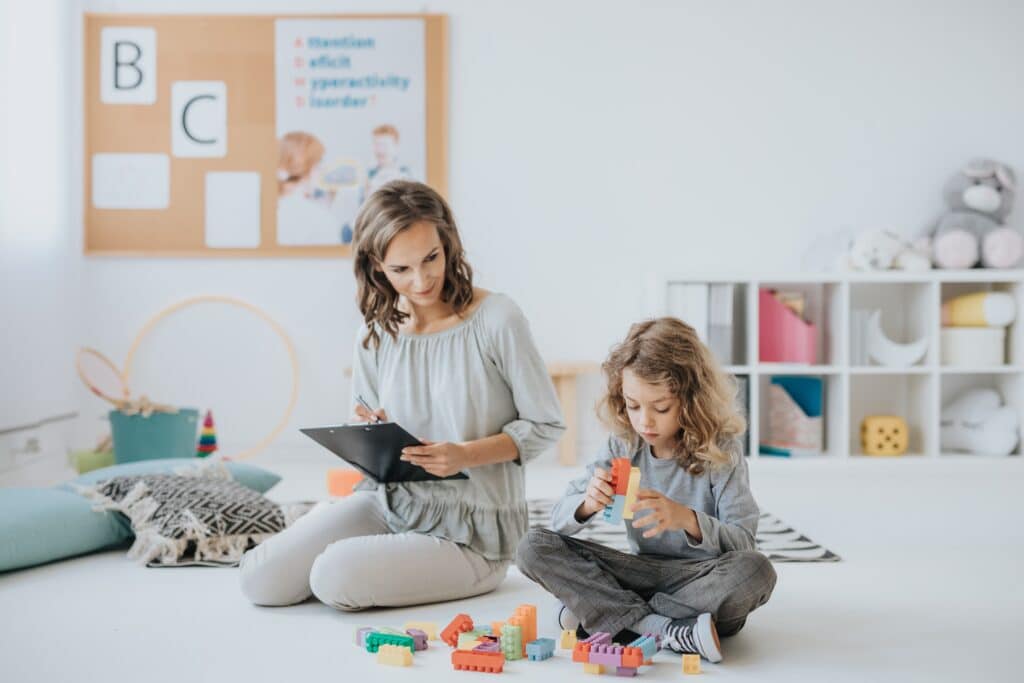Tech Breakthroughs in Autism Therapy 2024
The therapeutic realm for Autism Spectrum Disorder (ASD) is rapidly evolving, offering promising new approaches for developmental growth. With continuous research and technological integration, 2024 introduces groundbreaking therapies tailored to enhance the lives of individuals with ASD.
Advancements in Autism Behavioral Therapies
Enhancing Therapy with Digital Innovation

The utilization of VR environments is experiencing a surge in popularity, fueled by emerging data showcasing its numerous benefits. Particularly noteworthy is its efficacy in providing a more engaging and effective therapeutic experience for children with Autism Spectrum Disorder (ASD).
Floreo’s VR content has garnered recognition from the FDA as a breakthrough device, highlighting its potential to significantly enhance therapeutic outcomes. They have been leading the charge in reshaping traditional ABA therapy and other modalities with cutting-edge virtual reality (VR). Their VR experience delivers a therapy solution that makes learning truly engaging. It helps teach social, behavioral, communication, and life skills, marking a significant leap forward in digital innovation for autism therapy and learning.
Floreo’s statement, “Part of our value proposition is that we are a force multiplier for therapists and professionals working within the neurodiversity space.”
In Speech Therapy, VR technology is increasingly being used to improve social communication, including social functioning and emotion recognition. VR provides a three-dimensional simulation of real-world settings and social situations, making it an ideal tool for cognitive and performance training in speech therapy. This technology helps children with ASD to practice and improve their speech and language skills in a controlled and interactive environment, leading to better communication outcomes.
Occupational Therapy’s Technological Edge with VR
Similarly, XRHealth is taking Occupational Therapy to new heights. By simulating various sensory experiences, VR in Occupational Therapy provides a safe environment for individuals to explore and develop coping strategies for sensory challenges. This technology empowers therapists to customize sensory experiences based on each individual’s needs, fostering a personalized and effective approach.
The application of VR in Occupational Therapy extends beyond sensory challenges, encompassing a spectrum of hurdles from fine motor skill development to spatial awareness enhancement. The immersive quality of VR contributes to the creation of captivating therapeutic sessions, motivating individuals and ultimately yielding more impactful therapy outcomes.
Technological Innovations in Autism Support
Sensory Integration: Innovative Environments
One notable improvement is the progression of sensory friendly environments.These environments are designed to cater to those with sensory processing challenges.
Snoezelen’s advanced sensory rooms are continually setting exceptional standards for sensory integration rooms. Their multi-sensory environments not only establish calming spaces to alleviate agitation and anxiety but also captivate and bring joy to the user, triggering responses and fostering communication.
Their environments are distinguished by their ability to cater to all senses, with bubble tubes to enhance visual tracking, color recognition, physical movement, and hand-eye coordination to audio and tactile products. They offer a comprehensive and immersive sensory experience to contribute to the holistic development and well-being of individuals with autism and other sensory needs.
Another innovative product is the zPod. Numerous sleep studies underscore the critical role of adequate sleep in supporting a child’s optimal development. Insufficient sleep has been consistently linked to various negative outcomes, affecting cognitive function, emotional well-being, and overall health.
One notable study published in the journal “Pediatrics” revealed that children with irregular sleep patterns and shorter sleep durations were more likely to experience difficulties in attention, memory, and problem-solving skills, all of which are crucial for development. Zpod is a revolutionary solution transforming children’s sleep spaces, with a particular focus on addressing the unique needs of those with autism.
As the first U.S.-based company to provide customizable, sensory-friendly, enclosed safety beds, zPods stands out for its commitment to inclusivity. These regenerative spaces feature intelligent design elements, including customizable features, sensory-friendly lighting control, integrated white noise generation, and Bluetooth speakers. Providing great advantages for children with autism to provide a comforting environment that aligns with their sensory preferences, promoting a sense of security and calmness to foster sleep.
The Magic of Augmented Reality in NET
In the field of Neuro-Enhanced Technology (NET) and Augmented Reality (AR), the year 2024 brings about a significant change in innovative therapies for autism. A crucial study published in Frontiers in Virtual Reality in 2023 introduces ‘Magic Bubbles,’ an AR environment designed specifically for children with severe learning disabilities on the Autism Spectrum. This unique approach goes beyond traditional methods, providing a sensory-rich and interactive space that is comforting and interesting.
‘Magic Bubbles’ is seen as a source of hope, created based on extensive interviews with those involved. It cleverly combines audio, visual, and tactile elements in a head-mounted AR system, forming a safe and immersive world for children. This nurturing space focuses on strengthening the important connection between the child and the therapist, a key aspect of effective autism therapy.
The study’s groundbreaking approach, using a mix of grounded theory and mixed methods, offers deep insights into the long-term effectiveness of AR in autism therapy.
It represents a significant advancement in our understanding of therapeutic technologies, particularly in meeting the specific needs of children facing more complex challenges.

As we navigate the changing landscape of autism therapy, ‘Magic Bubbles’ serves as evidence of technology’s potential to transform lives, creating new opportunities for engagement and development in the realm of autism care.
Pivotal Response Training Embraces Customization
The evolution of PRT has been significantly influenced by digital tools, enabling a more personalized approach to therapy. Digital technology, especially apps and software tailored for PRT, allows therapists to track individual progress and adapt to each child’s unique learning patterns. For example, the PRT Certification Program by Koegel Autism Consultants offers online training for professionals, equipping them with the necessary skills for effective PRT implementation.
This program includes various certification levels, each focusing on different aspects of PRT, thus enhancing the ability of therapists to customize therapy according to the needs of each child and their family
One of the most significant advancements in PRT is the development of online parent training programs. These programs are instrumental in teaching parents how to apply PRT strategies in their daily interactions with their children.
A notable example is the PRT Online Course offered by Stanford University’s School of Medicine. This course provides comprehensive training to parents, covering key aspects of PRT and its application in natural environments such as home, community, and school settings. Parents learn to enhance verbal communication and social initiations in their children with ASD through engaging and practical online modules.
The course is self-paced and includes instructional videos, practical examples, and interactive worksheets, empowering parents to become active agents in their child’s developmental progress.

AAC Tools Empowered by AI
In 2024, the landscape of Augmentative and Alternative Communication (AAC) has been dramatically reshaped by the innovative integration of Artificial Intelligence (AI). This year, we’re witnessing a technological renaissance in AAC, where engineering solutions are not just tools but bridges connecting individuals with autism to the world around them with newfound ease and depth.
Speech synthesis technology has emerged as a cornerstone in this evolution, giving a voice to those who struggled to express themselves. By converting text into spoken words, this technology offers a new form of interaction for individuals with communication challenges. This advancement goes beyond mere conversation facilitation; it’s a pathway to active participation in life.
Gesture recognition technology has also broadened communication options, enabling individuals to use natural body movements to convey messages.
This intuitive interaction style, enhanced by AI, bridges communication gaps, allowing for an organic exchange of thoughts and emotions. It’s a testament to the innovative autism therapies shaping the approach to special needs care.
The rise of mobile AAC applications, integrated with AI, marks a pivotal advancement in making communication aids more accessible and adaptable. These apps, rich with symbol libraries and text-to-speech features, harness AI’s ability to learn and adapt to individual communication styles. Enhancing both the speed and accuracy of communication, AI in AAC tools brings a new dimension of expressiveness to each interaction, making them as unique as the individuals they assist.
As we move through 2024, the landscape of supports continue to expand and with each innovation a new hope for improvement and a better quality of life.
FIND OUT HOW APEX SOCIAL GROUP’S INNOVATIVE APPROACH TO DEVELOPMENTAL CHILD CARE CAN MAKE A DIFFERENCE IN YOUR FAMILY’S LIFE.
LEARN ABOUT THE APEX INDIVIDUALIZED CARE PLAN.
